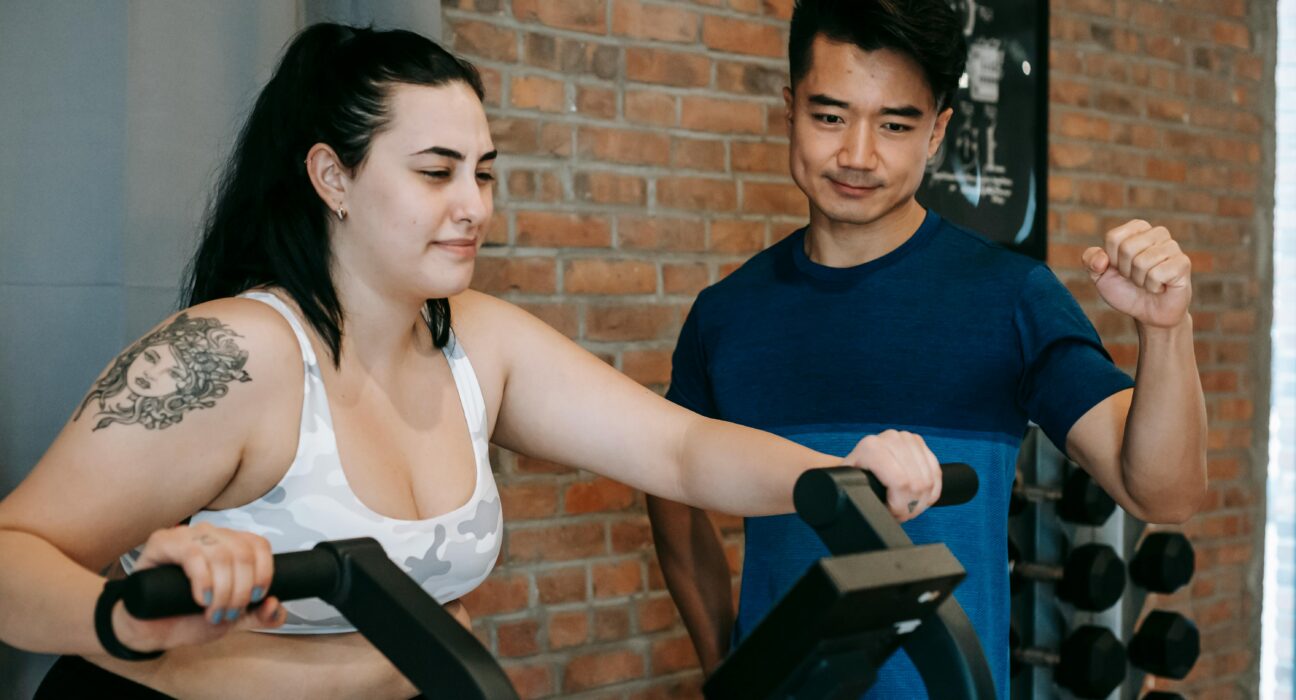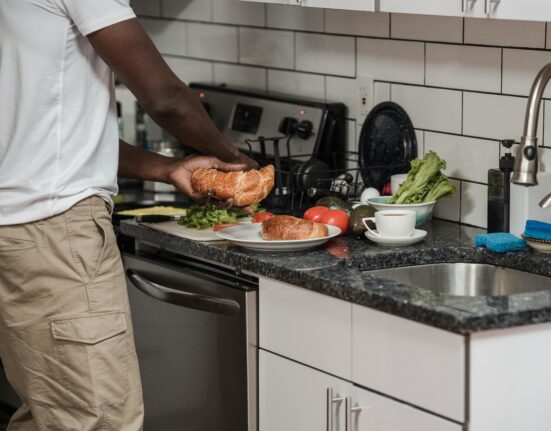Losing weight can feel overwhelming, especially with so much advice out there. But the truth is, a workout routine tailored to your goals can make all the difference. A structured plan helps you stay consistent, track progress, and achieve sustainable results without guesswork. Whether you’re looking to burn fat, build strength, or just feel healthier, the right approach sets you up for success. Ready to create a routine that works for you? Let’s get started.
Understanding the Basics of Weight Loss
When it comes to losing weight, understanding how your body works can make all the difference. Weight loss isn’t just about hitting the gym or eating less; it’s about creating a balance where your body burns more calories than it takes in. Below, we break down the science behind calorie-burning and highlight how exercise contributes to your long-term weight loss goals.
The Science Behind Weight Loss
Your body is like a machine constantly working to keep you alive. The calories you consume provide fuel for this machine, but how those calories are burned depends on three main factors:
- Basal Metabolic Rate (BMR): This represents the number of calories your body needs to perform basic functions at rest, like breathing or maintaining your heartbeat. Surprisingly, BMR accounts for the majority of your daily calorie burn. Learn more about how your BMR works.
- Physical Activity: Moving your body, whether it’s through workouts, walking, or even fidgeting, increases your calorie burn. Simple tasks, like taking the stairs or standing instead of sitting, add up over time. This is sometimes referred to as Non-Exercise Activity Thermogenesis (NEAT), which can significantly boost energy expenditure. Discover a guide to creative ways to burn calories.
- Thermogenesis: Even digesting food requires energy. This is called the thermic effect of food (TEF). While it doesn’t burn as many calories as exercise or BMR, it’s still part of the equation. Protein-rich foods, for example, tend to have a higher thermic effect compared to carbs or fats. Explore details about thermogenesis.
With these mechanisms at play, weight loss happens when you consistently burn more calories than you consume—commonly known as maintaining a calorie deficit.
Benefits of Exercise for Weight Loss
Exercise doesn’t just burn calories—it’s a powerful tool that offers a range of benefits, making it a cornerstone in any weight loss plan. Here’s how:
- Boosts Metabolism: Cardio and strength training can elevate your resting metabolic rate, meaning you burn more calories even when you’re not active. Regular exercise encourages your body to work more efficiently. Check out how exercise impacts metabolism.
- Preserves Muscle Mass: Losing weight without exercise often leads to losing muscle along with fat. Strength training ensures you maintain lean muscle, which is important because muscle burns more calories than fat. Keeping your muscle mass makes it easier to sustain weight loss.
- Supports Overall Health: Beyond the scale, exercise improves cardiovascular health, strengthens bones, and even releases endorphins that boost mood. It’s about feeling strong and vibrant, not just lighter. Explore the broader health benefits of exercise.
- Encourages Long-Term Sustainability: Exercise builds habits that go beyond weight loss. It reinforces an active lifestyle, keeping you healthier for years to come.
Consider exercise a tool with compounding benefits. It doesn’t just help you lose weight today; it creates a foundation for better health in the future.
Building the Foundation for Your Workout Routine
Creating a workout routine tailored for weight loss starts with a solid foundation. Think of it as building a house – without a sturdy base, it’s hard to keep everything intact in the long run. To ensure your efforts are sustainable, it’s essential to assess your current fitness, set meaningful goals, and identify when and how you can consistently exercise. Here’s how you can do it:
Assessing Your Fitness Level
Before jumping into your new workout plan, take a moment to figure out where you stand. Knowing your starting point helps you avoid injury, set realistic expectations, and track progress over time. How do you assess your fitness level? Here are some practical tips:
- Test Your Basics at Home: Perform a few simple assessments, like push-ups to gauge upper body strength, planks for core stability, and a short walk or run to measure endurance. Here’s a guide for doing simple at-home fitness tests.
- Consult a Professional: If you’re unsure where to begin, consider working with a personal trainer for a more in-depth evaluation. They can take you through standardized tests and create a plan based on your results.
- Track Your Mobility: Flexibility is a key but often overlooked part of fitness. Try basic stretches like touching your toes or the sit-and-reach test to evaluate how limber you are.
- Use Metrics: Tools like heart rate monitors or fitness apps can give you quantitative data on your endurance and recovery rate. Here’s what to know about tracking your fitness levels.

Photo by Mikhail Nilov
Setting Realistic Fitness Goals
Having a clear goal is like having a roadmap – it makes your journey smoother. But not all goals are created equal. To avoid discouragement, set targets that are realistic and achievable. The SMART (Specific, Measurable, Achievable, Relevant, Time-Bound) criteria is a tried-and-true method:
- Specific: Instead of saying, “I want to lose weight,” aim for something like, “I want to lose 1 pound per week.”
- Measurable: Use metrics so you know when you’ve succeeded—like tracking your weight, body measurements, or fitness milestones (e.g., running a mile under 10 minutes).
- Achievable: Make sure it’s something you can actually accomplish based on your fitness level, time, and lifestyle.
- Relevant: Your goals should align with your broader aspirations (e.g., improving energy levels, reducing stress, or fitting into your favorite clothes).
- Time-Bound: Attach a timeline for accountability, like committing to work out 3 times a week for the next month.
To dive deeper into the beauty of SMART goals, check out this helpful guide. Remember, success builds over time—don’t try to sprint through what’s meant to be a marathon.
Determining Your Available Time and Commitment
Let’s face it: life gets busy. Determining how much time you can realistically devote to exercise can make or break your routine. Simply promising yourself to “exercise more” isn’t enough—be intentional and strategic.
- Evaluate Your Daily Schedule: Take a look at your week and find specific blocks where you can prioritize fitness. Morning workouts work well for some, while others prefer evenings.
- Start Small: Even 20-minute workouts can make a difference if done consistently. HIIT sessions are a great option for those short on time.
- Commit to Less but Often: If squeezing in longer workouts isn’t feasible, focus on shorter but more frequent sessions.
- Turn Wasted Time Into Active Time: For example, transform TV time into an opportunity to do yoga or bodyweight exercises. Use these tips to find time to exercise even with a packed schedule.
By pinpointing when and how often you can exercise, you’ll lay the groundwork for a workout routine that not only fits your life but also helps you see real results.
Components of an Effective Weight Loss Workout Routine
A fully-rounded workout plan is key to losing weight effectively and keeping it off. Exercise isn’t just about sweating; it’s about fueling your metabolism, improving endurance, and setting your body up for sustainable fat burn. Whether you’re new to fitness or seeking to optimize your routine, understanding the key components can make a huge difference. Let’s break it down.
Incorporating Cardio Workouts
Cardio is a powerhouse when it comes to calorie burn. Whether it’s jogging, swimming, or cycling, aerobic exercises elevate your heart rate, helping your body torpedo fat reserves for energy. But why does it work so well?
First, cardio exercises directly help you create a calorie deficit, which is essential for weight loss. The harder you work and the more intense your session, the more calories you burn. High-Intensity Interval Training (HIIT), for example, combines short bursts of intense activity with periods of rest, making it an efficient way to burn calories in less time. Did you know running at just 6 miles per hour burns roughly 600 calories per hour? Check out this guide for cardio benefits.
For best results:
- Incorporate at least 150 minutes of moderate cardio or 75 minutes of vigorous cardio weekly.
- Mix up your activities to keep things interesting and prevent burnout. Try a combination of cycling and swimming for variety.
- Track your progress using fitness apps or heart rate monitors, ensuring you’re staying in the fat-burning zone.
Cardio doesn’t just help with weight loss; it enhances heart health, improves stamina, and can even boost your mood by releasing endorphins, the body’s “feel-good” chemicals.
Adding Strength Training
Strength training might sound intimidating to some, but it’s one of the best-kept secrets for sustainable fat loss. Why? Muscle is metabolically active, meaning the more muscle mass you have, the higher your resting metabolism. This allows your body to burn calories even while sitting on the couch. Learn why strength training shouldn’t be skipped.
Here’s how strength training helps:
- Builds Lean Muscle: Muscle takes up less space than fat, giving your body a leaner appearance as you shed pounds.
- Improves Metabolic Rate: For every pound of muscle you gain, your body burns an added 6–10 calories per day even at rest.
- Protects Bone Health: Weight-bearing exercises like squats and deadlifts can strengthen bones, reducing your risk of osteoporosis.
A simple strength training routine might include:
- 2-3 sessions per week targeting all major muscle groups.
- Compound movements like squats, push-ups, or deadlifts to engage multiple body parts at once.
- Gradual progression by increasing weight or resistance as you grow stronger.
Strength training goes hand-in-hand with cardio, creating a balanced approach to weight loss. Explore how strength training aids weight loss here.
Importance of Flexibility and Recovery
Flexibility and recovery often take the backseat in workout routines, but they’re essential for longevity and injury prevention. Think of your muscles like rubber bands—stiff bands are more likely to snap under stress, while flexible ones stretch and bounce back. Emphasizing stretching and yoga can make a huge difference in your recovery.
Benefits of focusing on flexibility and recovery include:
- Reduced Risk of Injury: Stretching keeps muscles pliable, reducing the likelihood of strains and sprains. Understand why stretching is critical.
- Enhanced Performance: Flexible muscles improve your range of motion, making every workout more effective.
- Promotes Muscle Recovery: Activities like yoga or foam rolling help relax muscle tightness, speeding up recovery between workouts.
Make it part of your routine:
- Stretch before and after every workout, focusing on major muscle groups.
- Include 1-2 yoga sessions weekly for added flexibility and mental calmness.
- Use tools like foam rollers or massage guns to relieve tightness and improve blood flow.
Recovery is as important as the workout itself. It’s during rest periods that muscles repair and grow stronger, enabling you to push harder in your next session. Explore recovery benefits here.
By striking a balance between cardio, strength training, and recovery-focused movements, you’ll create a workout plan that not only delivers results but also keeps you injury-free and motivated.
Designing a Weekly Workout Schedule
A well-planned weekly workout schedule can make or break your fitness journey, especially if weight loss is your primary goal. Creating this plan is like fitting together the pieces of a puzzle—each workout type, rest day, and adjustment plays a role. Below, we’ll guide you on how to balance different workout types and maintain long-term progress.
Balancing Different Workout Types

Photo by Bich Tran
To maximize your efforts, you need a balance between cardio, strength training, and recovery days. Mixing these elements helps you avoid overtraining, while ensuring all aspects of fitness—strength, endurance, and flexibility—are covered. Here’s a suggested split:
- Monday: Strength Training (45-60 minutes)
Focus on compound exercises like squats, push-ups, and deadlifts to target multiple muscle groups. Muscle building boosts metabolism and supports fat loss. - Tuesday: Cardio (30-45 minutes)
Do moderate-intensity activities, such as jogging, cycling, or swimming. Incorporate intervals like 1-minute sprints followed by 2 minutes of recovery to keep it challenging. - Wednesday: Active Recovery or Flexibility Work
Yoga, stretching, or light walking lets your body recover without being sedentary. This day prevents stiffness and improves overall mobility. - Thursday: Strength Training
Another strength-focused day to build lean muscle and increase functional fitness. Alternate exercises or target different muscle groups than Monday. - Friday: High-Intensity Interval Training (HIIT)
HIIT workouts can torch calories in minimal time. For example, alternate between 30 seconds of intense activity (like burpees) and 30 seconds of rest for 20 minutes. - Saturday: Cardio (Longer Duration)
A longer cardio session, like hiking or an extended bike ride, can help build endurance without pushing to high intensity. - Sunday: Rest or Active Recovery
Your body needs downtime to repair muscles and promote growth. Use this day to rest or engage in low-impact activities.
Building this type of schedule ensures variety, sustainability, and consistent progress. For more tips on crafting a well-rounded workout plan, check out this expert guide.
Progression and Adjustments
Starting with where you’re at and progressing over time is essential to getting results. Wondering how to avoid hitting those frustrating plateaus? It’s all about gradually increasing intensity and tweaking your program.
Here’s how to keep improving:
- Increase Volume Gradually
Add more reps, sets, or time for your exercises. For instance, if you’re currently squatting for 3 sets of 10 reps, move to 4 sets next week. - Introduce New Exercises
Your muscles adapt when you repeat the same moves over time. Challenge them by rotating exercises or using variations like Bulgarian split squats instead of regular ones. - Adjust Intensity
Lifting heavier weights or increasing cardio intensity (running faster or on an incline) forces your body to work harder. Not ready for big jumps? Small adjustments like adding resistance bands or slight speed increases can work wonders. - Listen to Your Body
Avoid blindly following a schedule if you’re feeling overly fatigued or injured. Take extra rest days if needed or reduce intensity to align with how you feel.
Tracking your progress is key to knowing what’s working. Use a workout journal or fitness apps to record milestones like increased weights or faster run times. Here’s a step-by-step guide to building your own routine.
Remember, your workout schedule is not set in stone—it’s adaptable to your changing fitness levels, goals, and lifestyle. Keep adjusting, and you’ll stay on track for long-term success.
Maximizing Results With Lifestyle Changes
Sustainable weight loss isn’t just about hitting the gym or cutting calories—it’s about lifestyle changes that amplify your efforts. Diet and workout routines are only part of the equation. Factors like nutrition, stress levels, and sleep patterns can make or break your results. By aligning these elements with your fitness goals, you’ll unlock a path to long-term success.
Pairing Workouts with a Balanced Diet

Photo by Annushka Ahuja
A car can’t run without fuel, and your body is no different. To make the most of your workouts, proper nutrition is critical. Think of food as fuel: what you eat before and after exercise supports your energy levels, builds muscle, and aids recovery.
Here’s how to align your diet with your fitness goals:
- Understand Macronutrients: Protein is essential for muscle repair and growth, carbs provide energy, and healthy fats support overall bodily functions. A common approach is to aim for a balanced plate:
- 50% carbs (such as fruits, veggies, or whole grains)
- 30% protein (like lean meats, tofu, or eggs)
- 20% healthy fats (from foods like avocados or nuts)
- Don’t Skimp on Pre-Workout Meals: About 1-2 hours before exercising, eat a snack with a mix of carbs (to energize you) and protein (to prevent muscle breakdown). Examples include a banana with peanut butter or Greek yogurt with berries. Find tips on eating to fuel your workouts.
- Recover the Right Way: After exercise, consumption of lean protein and fast-digesting carbs within 30 minutes can accelerate recovery. A smoothie with protein powder, spinach, and fruit is a quick and effective option.
Hydration matters too—dehydrated muscles don’t perform well. Drink plenty of water before, during, and after your sweat session. If a workout lasts longer than an hour, add an electrolyte drink to the mix.
By combining your workouts with smart eating, you’re setting the stage for enhanced energy and results. Here’s an in-depth guide on eating to optimize performance.
Managing Stress and Sleep for Weight Loss
It’s easy to overlook the role stress and sleep play in a weight-loss journey. Yet, they hold incredible power over your body and mind. Chronic stress and poor sleep can sabotage even the best workout program, while proper self-care strategies can keep you on track.
Why do stress and sleep influence your progress so much? Stress triggers your body to release cortisol, a hormone that, when elevated for extended periods, contributes to fat storage—particularly around the belly. Similarly, insufficient sleep affects appetite-regulating hormones (ghrelin and leptin), increasing hunger and cravings for unhealthy foods.
Here’s what you can do:
- Stress Management Tactics:
- Practice mindful activities like meditation, yoga, or deep breathing techniques.
- Include exercise routines, as they reduce cortisol levels while boosting endorphins.
- Consider journaling to clear your mind and declutter overwhelming thoughts. Learn more about how to manage stress for weight loss.
- Prioritize Sleep Hygiene:
Aim for 7-9 hours of restful sleep each night. Form gentle bedtime habits to signal to your body that it’s time to wind down:- Turn off electronics an hour before bed.
- Create a dark, cool, and comfortable sleeping environment.
- Avoid heavy meals or caffeine in the late evening. Discover in-depth advice on optimizing sleep for weight loss.
Making these lifestyle adjustments may seem subtle, but their cumulative effect on your weight loss journey is profound. As stress levels dip and sleep patterns improve, you’ll find it easier to stick to your workout routine and maintain a healthy diet.
Balancing these factors creates a ripple effect, elevating not just your progress but also your quality of life. Explore how reducing cortisol supports better weight loss.
Conclusion
Creating a weight loss workout routine doesn’t have to feel overwhelming. By combining cardio, strength training, and recovery, you build a balanced plan that fits your lifestyle and gets results.
The real secret isn’t perfection—it’s consistency. Small, steady efforts add up over time. Adjust as needed, listen to your body, and keep moving forward.
Take the first step today. Whether it’s scheduling your workouts or setting a realistic goal, action creates momentum. Trust the process, stay patient, and believe in your ability to achieve the results you’re working toward. You’ve got this!








